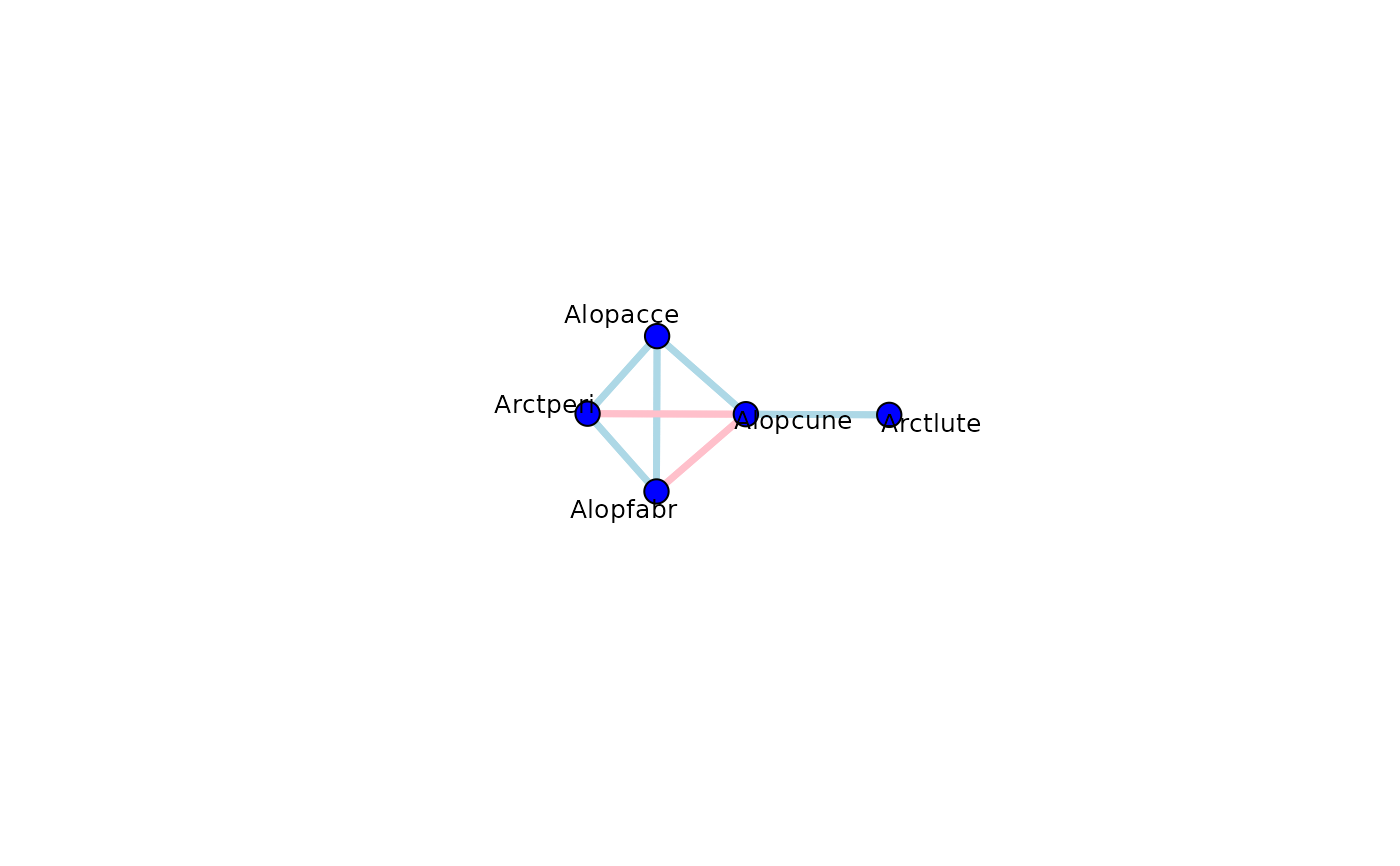Fitting Gaussian copula graphical lasso to co-occurrence data
cgr.Rdcgr is used to fit a Gaussian copula graphical model to
multivariate discrete data, like species co-occurrence data in ecology.
This function fits the model and estimates the shrinkage parameter
using BIC. Use plot.cgr to plot the resulting graph.
Arguments
- obj
object of either class
manyglm, ormanyanywith ordinal modelsclm- lambda
vector, values of shrinkage parameter lambda for model selection (optional, see detail)
- n.lambda
integer, number of lambda values for model selection (default = 100), ignored if lambda supplied
- n.samp
integer (default = 500), number of sets residuals used for importance sampling (optional, see detail)
- method
method for selecting shrinkage parameter lambda, either "BIC" (default) or "AIC"
- seed
integer (default = 1), seed for random number generation (optional, see detail)
Value
Three objects are returned;
best_graph is a list with parameters for the 'best' graphical model, chosen by the chosen method;
all_graphs is a list with likelihood, BIC and AIC for all models along lambda path;
obj is the input object.
Details
cgr is used to fit a Gaussian copula graphical model to multivariate discrete data, such as co-occurrence (multi species) data in ecology. The model is estimated using importance sampling with n.samp sets of randomised quantile or "Dunn-Smyth" residuals (Dunn & Smyth 1996), and the glasso package for fitting Gaussian graphical models. Models are fit for a path of values of the shrinkage parameter lambda chosen so that both completely dense and sparse models are fit. The lambda value for the best_graph is chosen by BIC (default) or AIC. The seed is controlled so that models with the same data and different predictors can be compared.
References
Dunn, P.K., & Smyth, G.K. (1996). Randomized quantile residuals. Journal of Computational and Graphical Statistics 5, 236-244.
Popovic, G. C., Hui, F. K., & Warton, D. I. (2018). A general algorithm for covariance modeling of discrete data. Journal of Multivariate Analysis, 165, 86-100.
Examples
abund <- spider$abund[,1:5]
spider_mod <- stackedsdm(abund,~1, data = spider$x, ncores=2)
spid_graph=cgr(spider_mod)
plot(spid_graph,pad=1)
